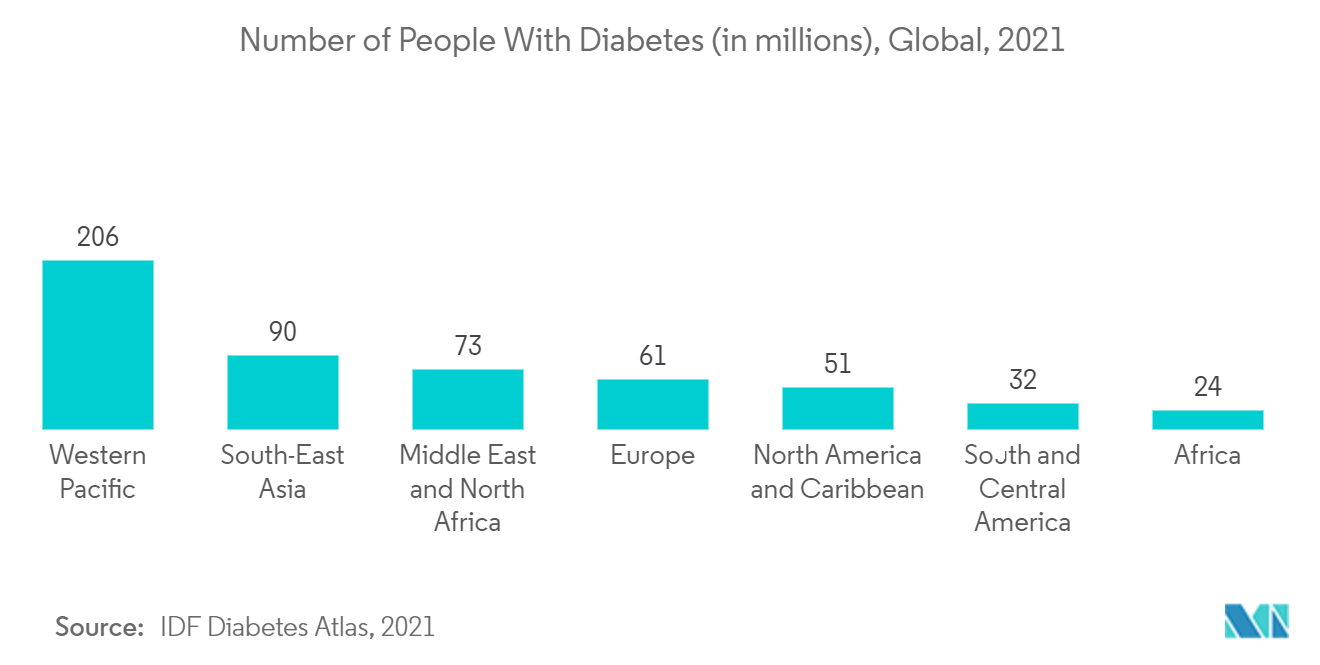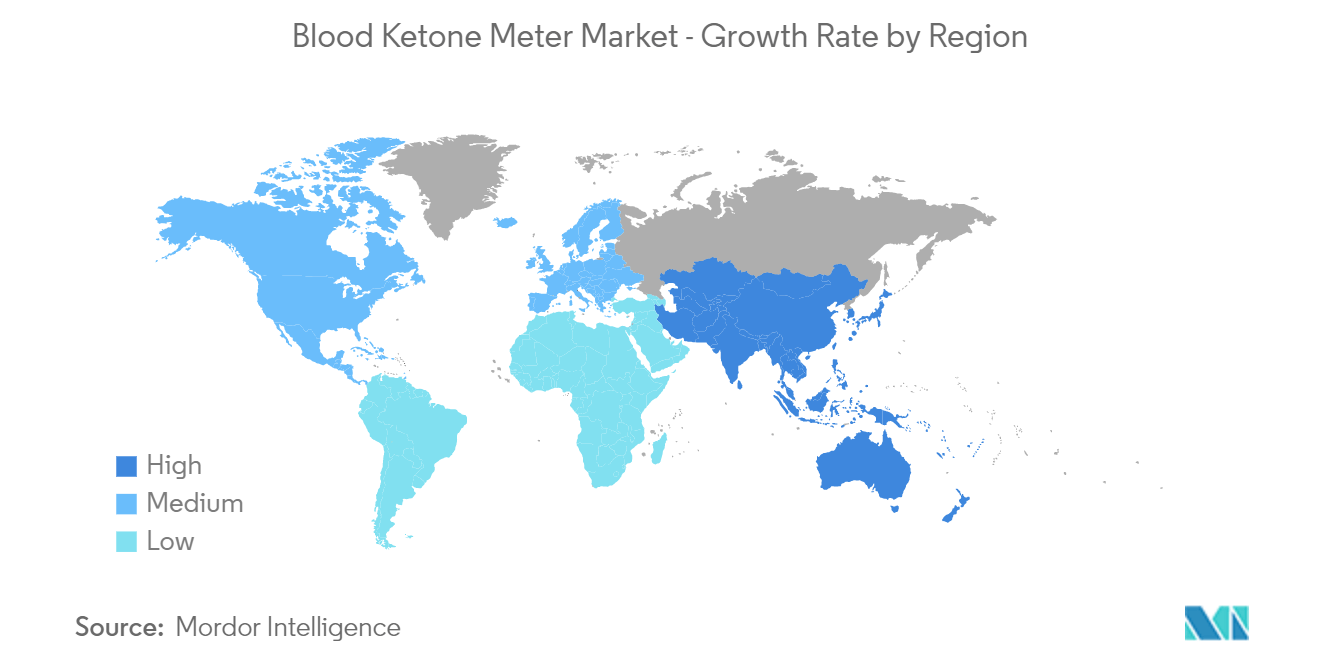Market Trends of Blood Ketone Meter Industry
The Blood Ketone Monitoring Segment is Expected to Account for a Significant Market Share Over the Forecast Period
The blood ketone monitoring segment captured a significant share of the market as these devices help in the early identification of the production of ketones and may also warn of impending ketoacidosis, which may ultimately reduce the complications of diabetic ketoacidosis. The rising prevalence of diabetic ketoacidosis and diabetes is among the major factors augmenting market growth. The rise in the geriatric and obese population worldwide is expected to boost the growth of the segment as well.
For instance, according to an article updated by ScienceDirect in 2021, the incidence of diabetes ketoacidosis is estimated to be 46 to 80 per 10,000 patients with diabetes. The source also stated that an estimated 20% of diabetes ketoacidosis episodes occur in patients with a new onset of diabetes, and only 20% of patients with diabetic ketoacidosis have multiple annual episodes. Thus, the high prevalence of diabetes ketoacidosis is expected to enhance the adoption of blood ketone monitoring devices.
Moreover, according to the data published by IDF in 2022, there were an estimated 8.75 million individuals worldwide with type 1 diabetes, and one-fifth (1.9 million) of these individuals live in low-income and lower-middle-income countries. The source also stated that there were an estimated 530,000 new cases of type 1 diabetes diagnosed in 2022. Thus, the high prevalence of type 1 diabetes is also expected to boost segment growth.
Furthermore, according to the World Population Prospects 2022 Report published UN in 2022, it was estimated the share of the global population aged 65 years or above is projected to rise from 10% in 2022 to 16% in 2050. By 2050, the number of persons aged 65 years or over worldwide is projected to be more than twice the number of children under age 5 and about the same as the number of children under age 12. As diabetes is often associated with old age, the rising geriatric population is also expected to enhance segment growth.
Thus, the aforementioned factors such as the rising prevalence of diabetes and diabetes ketoacidosis, and the rising geriatric population are expected to enhance the segment growth.

North America is Expected to Hold a Significant Market Share During the Forecast Period
North America holds a significant market share in the blood ketone meter market. The major factors responsible for the growth in the region include the rising geriatric and obese population, the increasing prevalence of diabetes, and the increasing developments by key market players.
According to the data published by Diabetes Canada in March 2022, it was estimated that there were more than 5.7 million Canadians living with diagnosed diabetes (type 1 or type 2 diabetes) in 2022, and there are 11.7 million Canadians living with diabetes or prediabetes. The source also stated that diabetes was also costing the healthcare system USD 30 billion per year to treat people with diabetes, and the high prevalence of diabetes had an overwhelming impact on the communities and healthcare system of the country. Thus, the rising prevalence of diabetes in the region is expected to boost market growth.
Moreover, the rising geriatric population is also a major factor in market growth. For instance, according to the data published by Statistics Canada in July 2022, it is estimated that around 7,330,605 people are 65 years of age or older in Canada, which accounts for 18.8% of the total population.
Additionally, the rising developments by major market players are also expected to enhance the market growth in the region. For instance, in January 2022, Abbott Laboratories, a United States-based company, announced that it is developing a new category of consumer wearables called Lingo, which is being designed to track key signals in the body such as glucose, ketones, and lactate, to help people better understand their general health and take action to improve it.
Thus, the aforementioned factors such as the rising prevalence of diabetes, and the rising geriatric population are expected to enhance the market growth in the region.


